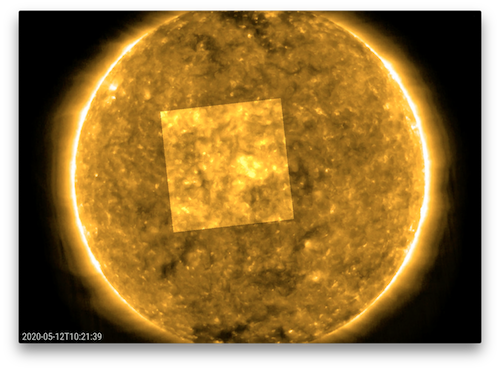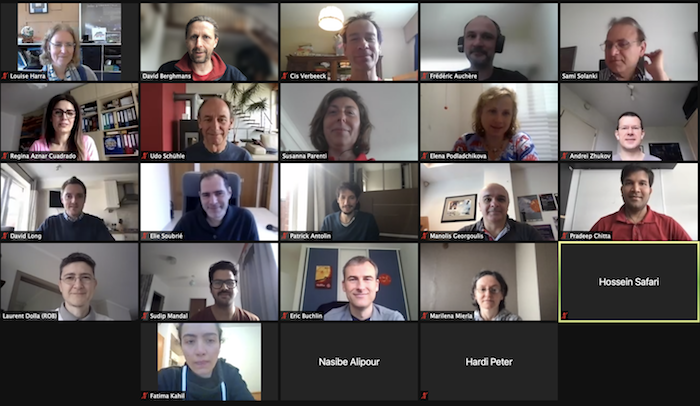During the past year, our space telescope experts had to figure out what the best way was to operate the telescopes remotely while they cruise through deep space. Answers to critical questions needed to be found: which exposure time produces the best image, how many pictures can we take per minute, do we have to finetune the data compression by the onboard computer, where are the bad pixels in the sensors, do the telescopes understand the uploaded computer commands, etc.
The EUI support team worked relentlessly to build a firm basis such that the EUI telescopes can take pictures in the best possible conditions, with the most performant software and smoothly running techniques.

EUI on its voyage to the Sun - Click here for a movie
To make the highest possible resolution images of the solar atmosphere, Solar Orbiter was designed to bring EUI closer to the Sun than any other solar disk telescope before. The JHelioviewer movie starts with a view by the EUI “Full Sun” telescope and fades over to an image of one of the EUI high resolution telescopes. The images shown are the first light images taken on 2020 May 12. As we approach the Sun, the resolution in the images will further increase. In the last year, several close approaches (‘perihelion’) were already made, bringing EUI half way between the Earth and the Sun. The heat shield of Solar Orbiter resisted the 4x increased heat. In March 2022, a next perihelion will bring us down to a third of the Earth- Sun distance.
Researchers everywhere are eager to analyse such high quality and high resolution pictures. The first light of May 12 2020 was already an excellent foretaste leading to an immediate success by revealing ‘campfires’ on the Sun. Researchers started debating right away this discovery. It might give an answer to the long standing mystery of why the solar atmosphere is much hotter than the solar surface.
One year after launch, the EUI telescopes are ready for their scientific mission that will officially start on December 27 2021. Scientists worldwide are preparing to use the EUI instrument, together with other instruments on Solar Orbiter, on different space missions and on the ground.
It's clear, EUI paves the way for more, better and in-depth science. Expectations are high.

For the EUI online scientific conference on May 10 2021, 340 participants from all over the world joined.
The world has changed during the past year since EUI took its first images. With the ongoing pandemic, scientists cannot meet anymore in scientific conferences or workshops to coordinate their research or give training in summer schools for future scientists. The Solar Orbiter scientists are therefore massively embracing new ways of interacting, learning to set-up online communities, chat-room channels, and ‘conference’ presentations streaming over the internet. Often scientists are learning the tricks from their teenage children. As the end of the pandemic hopefully comes in sight, scientists are faced with the question of whether they want to go back to continuous worldwide travelling or whether the growing climate-awareness will make the new ‘worldwide teleworking’ trend stay.

It has been great fun last year





